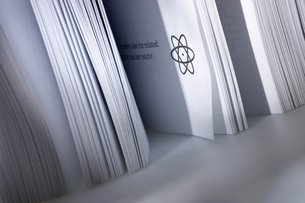Module 1 Intro
1. Module 1 Intro
1.18. Page 7
Module 1—Chemical Foundations
 Reflect on the Big Picture
Reflect on the Big Picture
 Assessment
Assessment
Continue working on your module project by researching answers to the following questions. Save a copy of your answers to your course folder. For more information about the module project, refer to the Module Summary and Assessment section for this module.
-
How does the uranium used in a CANDU reactor exist in nature? What processes are used to prepare it for use in a CANDU reactor?

© 2007 Jupiterimages Corporation
-
What concerns exist about the mining and the processing of natural sources of uranium?
-
How have uranium mining and extraction facilities affected communities?
While researching the Internet, keep these guidelines in mind:
-
Ensure that you research multiple websites to obtain a wide variety of information and viewpoints.
-
Evaluate the websites you visit, and ensure they are from a reliable source.
-
Select appropriate resources, such as online encyclopedias, government websites, and post-secondary school websites.
-
Document your sources in a bibliography.
-
Respect the ownership and integrity of the information. Ensure your final project submission is in your own words.
 Lesson Summary
Lesson Summary
Reflect on the essential questions posed to you at the beginning of this lesson:
-
Do you recall the principles from Science 10 for assigning names to ionic compounds?
-
How does an ionic bond form from the simultaneous attraction of oppositely charged ions?
-
Why do formulas for ionic compounds refer to the simplest whole-number ratio of ions?
-
What are valence electrons? What is electronegativity? What is an ionic bond? What is an intramolecular force?
Use what you have learned during this lesson to answer these questions. If you record your answers, place a copy of them into your chemistry folder along with your other completed lesson work.
Ionic compounds surround you. They are formed when a metal transfers one or more electrons to a non-metal. Ionic compounds may involve multi-valent metals, polyatomic ions, and hydrates. These compounds are solid at room temperature and, if soluble in water, form conducting solutions. In this lesson you reviewed the rules for naming and identifying four different types of ionic compounds. You learned the importance of maintaining electrical neutrality in an ionic compound and determined the ratio of ions that yields a net charge of zero. Finally, you studied electronegativity and how it affects the formation of a chemical bond through competition for bonding electrons.
Lesson Glossary
binary ionic compound: a compound that contains only two kinds of monatomic ions
chemical formula: a series of symbols representing the atoms/ions, and their proportions, present in a pure substance
coefficient: a number used to represent the quantity of molecules or the formula unit of a substance; a number that precedes a chemical formula
compound: a pure substance that can be separated into its elements by heat or electricity; a substance containing atoms/ions of more than one element in a definite fixed proportion
electronegativity: a value that describes the relative ability of an atom to attract a pair of electrons
hydrate: a substance containing loosely bonded water molecules
intramolecular force: the relatively strong bonds or forces of attraction and repulsion within a molecule; typically covalent bonds
ionic bond: the simultaneous attraction among positive and negative ions
monatomic ion: a positively or negatively charged particle formed from a single atom by the loss or gain of electrons; also known as a simple ion
multi-valent: the ability of an atom to exist as ions with different charges
polyatomic ion: a combination of two or more non-metal atoms that have a net charge not equal to zero
solubility: the concentration of a saturated solution at a specified temperature
water of crystallization: water within a crystal, which is necessary for the maintenance of crystalline properties but capable of being removed by sufficient heat